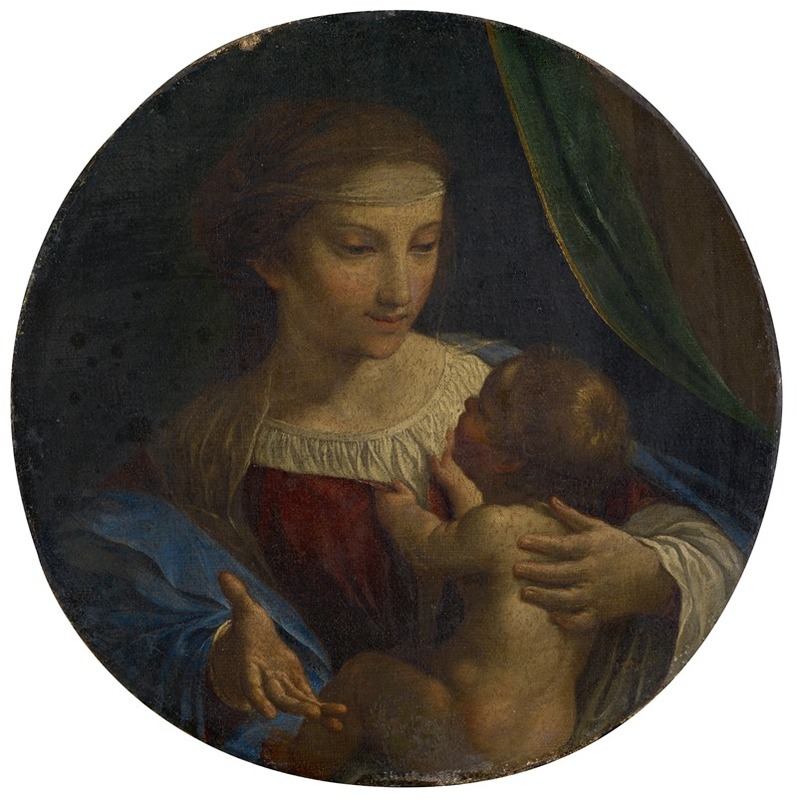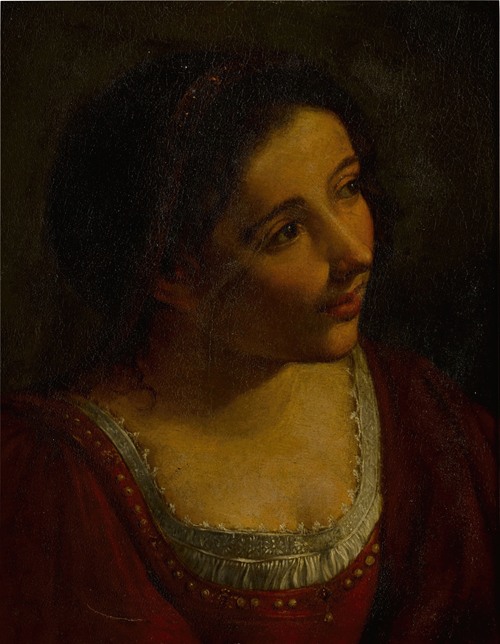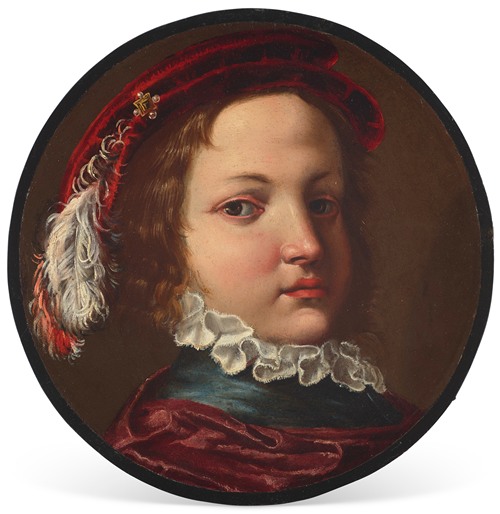
Angelo Caroselli or Carosèlli was an Italian painter of the Baroque period, active mainly in his native Rome. He created religious works, allegories, portraits as well as genre scenes in the vein of the Caravaggisti. He also returned regularly to scenes of witchcraft and sorcery. His style is eclectic style and shows influences principally from Caravaggio and the painters of 'low-life' scenes active in Rome called the Bamboccianti. His work is characterised by its search for originality. This is demonstrated in the potent naturalism and chiaroscuro that characterise his compositions and his preference for depicting colorful characters of contemporary Rome and scenes of witchcraft and musicians. The work of Caroselli was influential on other Caravaggisti such as the Lucchese painter Pietro Paolini and the Dutch painter Dirck van Baburen.
Despite the Caravaggist influences his work is characterised by its search for originality and a certain resistance to the triumphant absolutism of the Baroque style, which is expressed through some 'archaicizing' leanings in his work. Caroselli was also active as an art restorer, copyist, and, possibly, forger. In recent years a corpus of paintings has been attributed to a yet to be identified artist referred to with the notname of Pseudo-Caroselli. The style of the anonymous artist is so close to that of Caroselli that it is believed that this artist must have been in direct contact with Caroselli. The resulting similarity in styles has made it difficult to attribute certain works with certainty to either of the two artists.
Angelo Caroselli was born in Rome on 11 February 1585. His father was a reseller of second-hand gold and silver, a low-class activity in those days. He grew up in a popular neighborhood of Rome. Angelo did not get a formal training but was self-taught. He learned to paint by working as an art restorer and copyist. He became very skilled at copying older masters such as Annibale Carracci, Titian and Caravaggio. It is said that Poussin could not distinguish Caroselli's copy of a Madonna by Raphael from the original. It was rumored that he was also an art forger and passed some of his copies off as originals. Passeri describes how Angelo Caroselli dressed in a very strict Stoic fashion, giving up all luxury. This reportedly gave him a laughable appearance and had a negative impact on his reputation. However; this did not stop him from being a playboy who sought out the pleasures of love on which he spent much of his time.
The artist spent time in Florence possibly in 1605–6 or 1610. Here he was employed to paint copies and pastiches of paintings particularly appreciated by Cosimo II de' Medici, Grand Duke of Tuscany. The artist joined the Accademia di San Luca of Rome in 1604 or 1608 and stayed a member until 1636. He was likely a non-voting member until he became 30 years old under the rules introduced by Pope Paul V in 1605. He was able to obtain important commissions including in the Chiesa Nuova. In this church he painted two Prophets and a Pietà in oil paint on plaster on the walls of the Vittrice Chapel ub 1611–12. Caroselli collaborated with the Caravaggist Giovanni Francesco Guerrieri during that artist's stay in Rome from 1615 to 1618. They jointly created Caravaggesque scenes for the Palazzo Borghese in Campo Marzio.
In 1615 Caroselli married Maria Turca or Turcha (also erroneously called 'Zurca'), whose father was a Sicilian of Palermo who had lived in Rome for many years. Passeri goes on to state that the family lived in dire straits as Caroselli did not get many commissions. For that reason the young couple left Rome in 1616, and after spending possibly some months in Piedimonte Matese in the province of Caserta, they settled in Naples. The family's single daughter and three sons Carlo, Angelo and Francesco were all born in Naples. The first born was the daughter Giacoma who was baptized in Naples on 26 September 1516. The last son was baptized in Naples on 25 February 1623. The Caresolle family moved back to Rome in 1626. Caroselli was notorious for his love for beautiful women and was often derelict in his marital duties towards his wife.
Caroselli was able to attract a number of pupils to his workshop. He shared a studio with Pietro Paolini, a painter originally from Lucca who had come to Rome to study in 1619 when he was only 16 years old. Whereas in the past the relationship between Caroselli and Paolini was regarded solely as that of a master and apprentice, more recently discovered materials point to a more complex relationship, more akin to that of collaborators and characterised by the sharing of themes. Caroselli was continuously absent from Rome from June 1616 until February 1623 so it would have been impossible for Caroselli to be Paolini's master. Paolini's documented presence in Lucca in 1626, at least for the period June–October further limits the period of their interaction. Caroselli was an important influence on the style of Paolini's work throughout his career.
In the 1630s the artist went through a turbulent time. In that decennium he received a commission from the Barberini family. He also became a friend of Cardinal Lorenzo Magalotti and made a trip to Ferrara with Guercino. In 1635 he worked on frescos in the Palazzo Pamphilj in Rome. He also formed close relationships with Prospero Fagini, Giovanni Francesco Salernitano, a nobleman from Naples, and Giovanni Luca de Franchis, an aristocrat from Genoa. After becoming a widower in 1637 he lived with the painter Agostino Tassi. He was a frequent collaborator of Tassi who used him to paint the large figures in his landscapes.
Caroselli married in 1642 Brigitta (or Brigida) Lauwers (Lauri), the daughter of the Flemish landscape painter Balthasar Lauwers who resided and worked in Rome since the early 1600s. He thus became the brother-in-law of the painters Filippo Lauri and Francesco Lauri. Filipo and Francesco became his pupils and collaborators, as evidenced by the altarpiece of 1631 representing Pope Gregory I executed for the church of S. Francesca Romana. The work, which was clearly influenced by Carlo Saraceni, was almost entirely by the hand of Francesco Lauri. Angelo's own son Carlo was his pupil but his oeuvre is not well established. Tommaso Luini (called il Caravaggino) was also one of his pupils.
After his second marriage, Caroselli's family life settled down and he became more diligent in his work. Although suffering from ill health, he continued to paint until his death in Rome on 8 April 1652.



